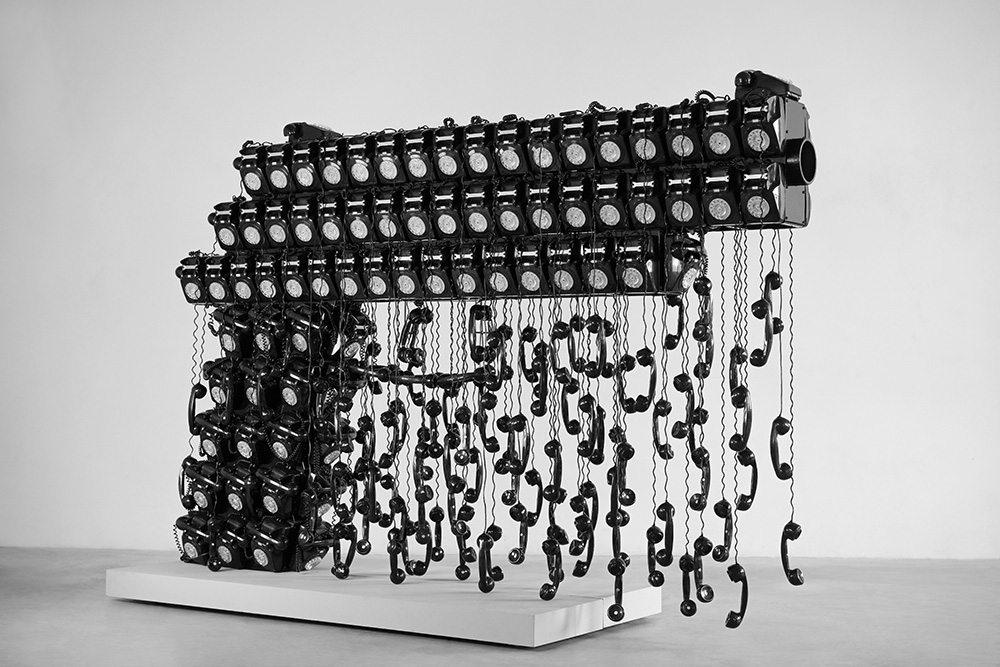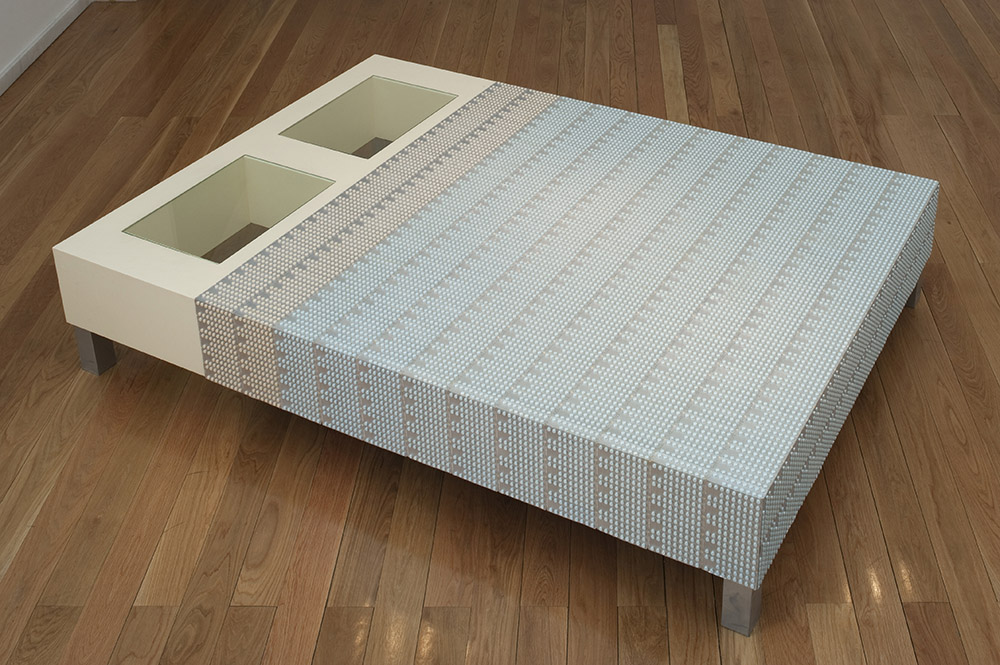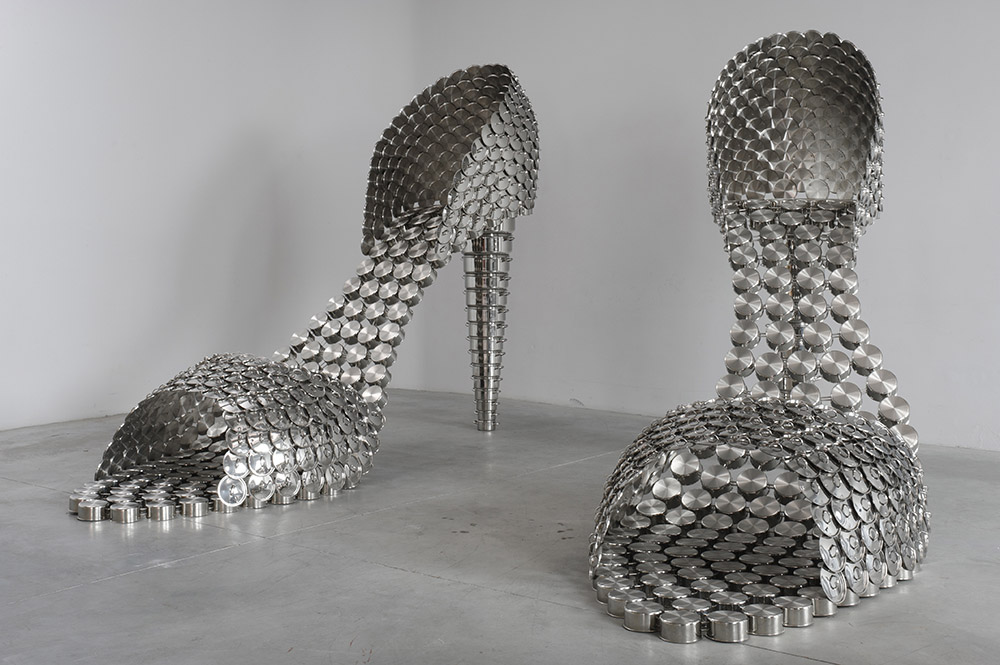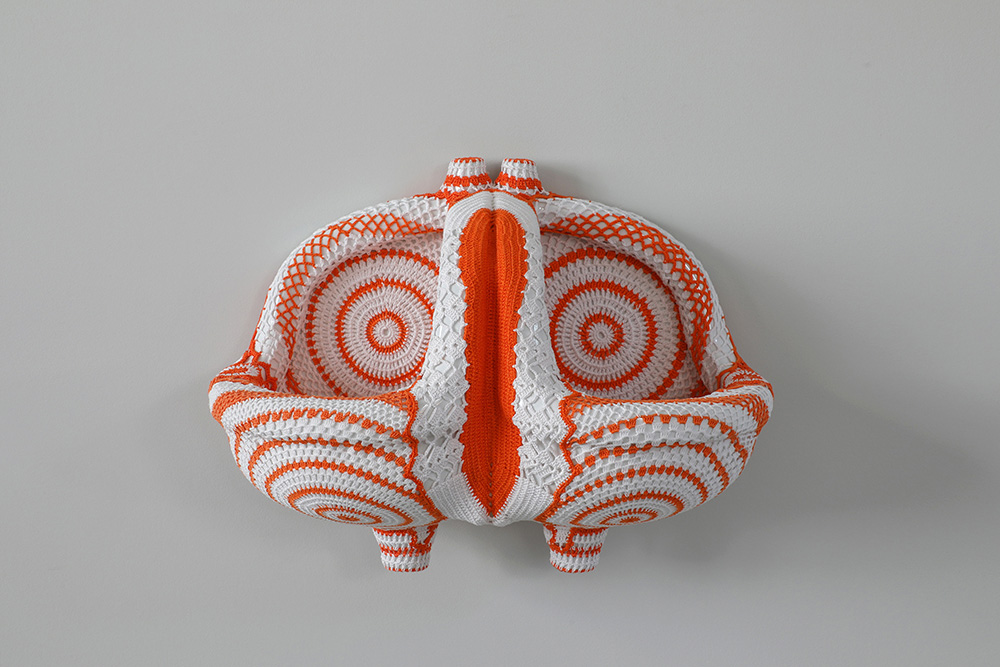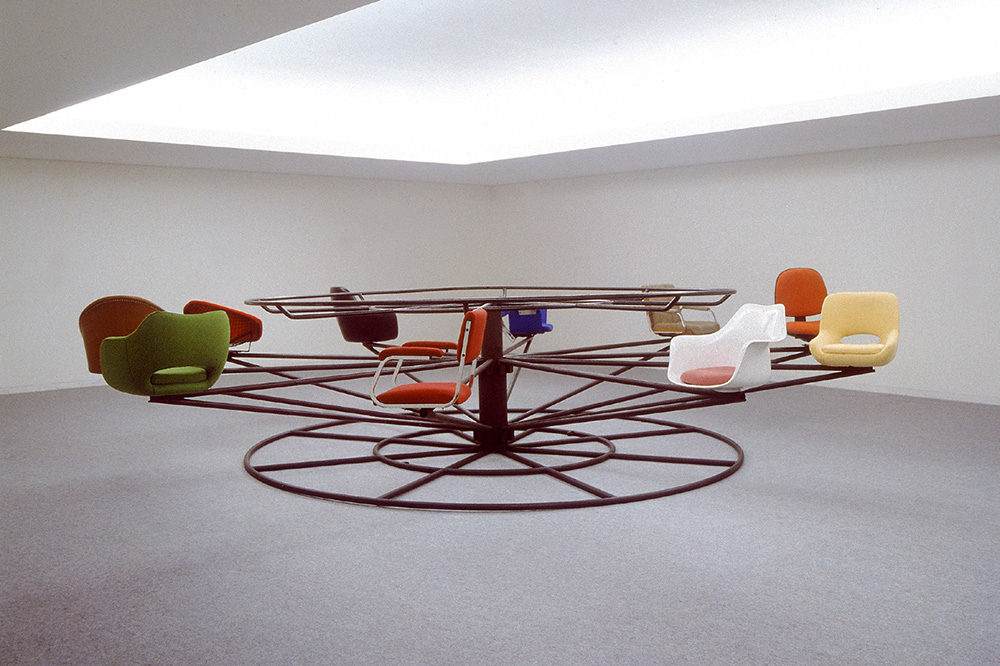ART-PRESENTATION: Joana Vasconcelos-I’m Your Mirror
 Through the construction of light-hearted yet strikingly direct images that refer to socio-political issues relevant to post-colonial, globalized and consumerist societies, Joana Vasconcelos addresses topics ranging from immigration to gender violence. Her work became known internationally after her participation in the 51st Venice Biennale in 2005, with “A Noiva” (2001-05).
Through the construction of light-hearted yet strikingly direct images that refer to socio-political issues relevant to post-colonial, globalized and consumerist societies, Joana Vasconcelos addresses topics ranging from immigration to gender violence. Her work became known internationally after her participation in the 51st Venice Biennale in 2005, with “A Noiva” (2001-05).
By Dimitris Lempesis
Photo: Guggenheim Museum Archive
Joana Vasconcelos in her solo exhibition “I’m Your Mirror” at Guggenheim Museun in Bilbo, presents a selection of thirty works produced between 1997 and the present day, including a site-specific installation for the Atrium of the Museum and various other new works. Some of her works are extraordinarily complex: they move, make sounds, or light up. Vasconcelos uses a wide variety of materials from everyday life to make these works, such as household appliances, tiles, fabrics, pottery, bottles, medicines, urinals, showers, kitchen utensils, telephones, cars, and plastic cutlery. With them the artist constructs light-hearted yet strikingly direct images that refer to socio-political issues relevant to post-colonial, globalized and consumerist societies, addressing issues that range from immigration to gender violence. There is always a sense of humor, and the pieces suggest open, non-dogmatic meanings similar to the relational aesthetics that emerged in the late 1990s, since they too require the viewer to participate actively in the perception and interpretation of the artwork. The exhibition starts with works from the early years of Vasconcelos’s career, such as “Cama Valium” (1999), “Burka” (2002) and “A Noiva” (2001-05), where the artist dealt with issues of feminine identity in both the private and the political and social spheres. Alongside these, the show includes some of her most recent works, using kitchen utensils and household appliances, Vasconcelos continues to explore the theme of feminine identity with simplicity and irony. “Marilyn” (2011) consists of a pair of sky-high stilettos assembled with stainless steel pots, while the three existing version of “Full Steam Ahead” (2012-14) composed of steam irons that move in what looks like a choreography for robots. In the meantime, “Call Center” (2014-16) is a huge black revolver made of Bakelite telephones that plays electro-acoustic symphony created with the bells of the telephones by the composer Jonas Runa. The exhibition includes “Egeria” (2018), an enormous work from the Valkyries series made exclusively for the Atrium of the Guggenheim Museum Bilbao. There it will engage in dialogue with Frank Gehry’s complex spaces, undoubtedly making it one of the great attractions of the show. “I’ll Be Your Mirror” (2018), the work that gives the exhibition its title is an enormous and surprising Venetian mask created with mirrors overlapping like scales, each with a richly ornamented frame designed by the artist herself. Visitors are invited to look through the Gulliver-like mask from the inside or the outside, but at no point do they lose sight of their own image reflected in the many mirrors that make it up. The title is taken from the song “I’ll Be Your Mirror”, written by Lou Reed and performed by The Velvet Underground and Nico, whose promise is to reflect the true “self” like a mirror. “Call Center” (2014-16) presents itself under the form of an enormous Beretta revolver built with recourse to the accumulation of 168 black landline telephones, each of the same exact model. The hyperbolized form of a Beretta revolver, built using dozens of telephones, points directly towards the violence that may be produced through the power of mass communication. In the “Pop Rooster” (2016) that is installed outside of the Museum the artst keeps the aesthetic richness of the rooster of Barcelos, and four important transformations to this symbol: enlarges it to a monumental scale – 10 metres high; covers it with around 17 thousand handmade tiles – designed at the artist’s studio and manually produced and painted at the centenarian Viúva Lamego factory; and introduces a dazzling game of sound and light, through the composition by musician Jonas Runa and 15 thousands of LED lights that fill the colored surface of the work.
Info: Curators: Enrique Juncosa and Petra Joos, Guggenheim Museum Bilbao, Avenida Abandoibarra, 2, Bilbao, Duration: 29/6-11/11/18, Days & Hours: Tue-Sun 10:00-20:00, www.guggenheim-bilbao.eus

![Joana Vasconcelos, Full Steam Ahead (Yellow) [A Todo o Vapor (Amarelo)] #1/3, 2014, Full Steam Ahead (Green) [A Todo o Vapor (Verde)] #1/3, 2013, Full Steam Ahead (Red) [A Todo o Vapor (Vermelho)] #1/3, 2012, BOSCH steam irons, PLC gearmotor, microprocessor-based electronic control unit, low pressure hydraulic system, stainless steel, demineralized water, (3x) 155 x Ø 170 cm, Collection of the artist, Work produced with the support of Robert Bosch Hausgeräte GmbH, © Joana Vasconcelos, VEGAP-Bilbao, 2018](http://www.dreamideamachine.com/web/wp-content/uploads/2018/06/ATodoOVapor_AmareloVerdeVermelho1_TM2014_LV_E.jpg)
